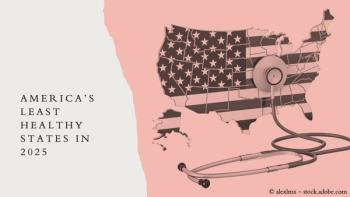
Management of HBP in the elderly needs individualization
In her presentation at the 2015 AHA Fall Conference, Nanette K. Wenger, MD, spoke about management of high blood pressure in the elderly. Wenger showed case studies to illustrate variations of blood pressure among elderly patients and how to manage them.
Management of high blood pressure in the elderly requires individualizing treatment based on a combination of clinical practice guidelines, patient preferences, and ultimately clinician judgment, according to Nanette K. Wenger, MD, professor of medicine (cardiology) emeritus at
“There really is no template for the oldest old,” she said.
During her presentation entitled “HTN Management in the Older Old: Is It Ever Too Late?” at the American Heart Association (AHA) meeting, Wenger used case studies to illustrate the variations among the elderly from the frail to the functional and “all the variables in the middle.”
She opened her talk discussing two patients, both white, 87-year-old men with blood pressure at 180/100 mmHg. One man was active and alert and played golf twice weekly, had diabetes controlled with metformin, and hypercholesterolemia controlled with a statin. The other man with the same elevated blood pressure had mild cognitive impairment and needed a walker, severe osteoarthritis, atrial fibrillation with no anticoagulation because of a fall risk, and prostate cancer not currently being treated.
Given the variability among the elderly, Wenger emphasized the need to combine clinical guidelines with patient preferences and then use clinical judgment to manage each patient according to their needs.
Table 1 lists a number of clinical practice guidelines she described.
Further guidance may be forthcoming from the Systolic Blood Pressure Intervention Trial (SPRINT), which is assessing the outcomes between reducing systolic BP <140 mmHG versus <120 mmHg and includes a subset analysis of the elderly.
Overall, Wenger stressed the need to include lifestyle modifications when managing hypertension in older old adults, as well as starting on low dose of pharmaceuticals and titrating slowly, while also considering the presence of comorbidities.
Commentary by William J. Kostis, PhD., MD, assistant professor of medicine,
The issue of target blood pressure for elderly patients with hypertension is an important public health issue. In determining a target blood pressure for a particular older individual, physicians should consider the following:
- Individual variability−marked differences in health status exist among older individuals of the same age
- With respect to pharmacotherapy, “start low, go slow”, with attention to adverse effects and tolerability
- Frail patients may not tolerate pharmacotherapy
- Pay attention to comorbidities, orthostatic effects, and changing clinical picture
- Some (suboptimal) blood pressure lowering is better than none
- Do not decrease (or increase) blood pressure medications only because of increasing age
- Currently proposed targets are: blood pressure <140/90 mm Hg for most people aged less than 80 years and <150/90 mm Hg for those over 80 years and in good health
In SPRINT, among patients at high risk for cardiovascular events but without diabetes, a target systolic blood pressure of <120 mm Hg (rather than 140 mm Hg) was associated with a 35% lower cardiovascular event rate and 25% lower all-cause mortality. SPRINT investigators have reported higher rates of hypotension, syncope, electrolyte abnormalities, and acute kidney injury among those in the intensive-treatment group. SPRINT is continuing with respect to renal and CNS outcomes.
Newsletter
Stay informed and empowered with Medical Economics enewsletter, delivering expert insights, financial strategies, practice management tips and technology trends — tailored for today’s physicians.








